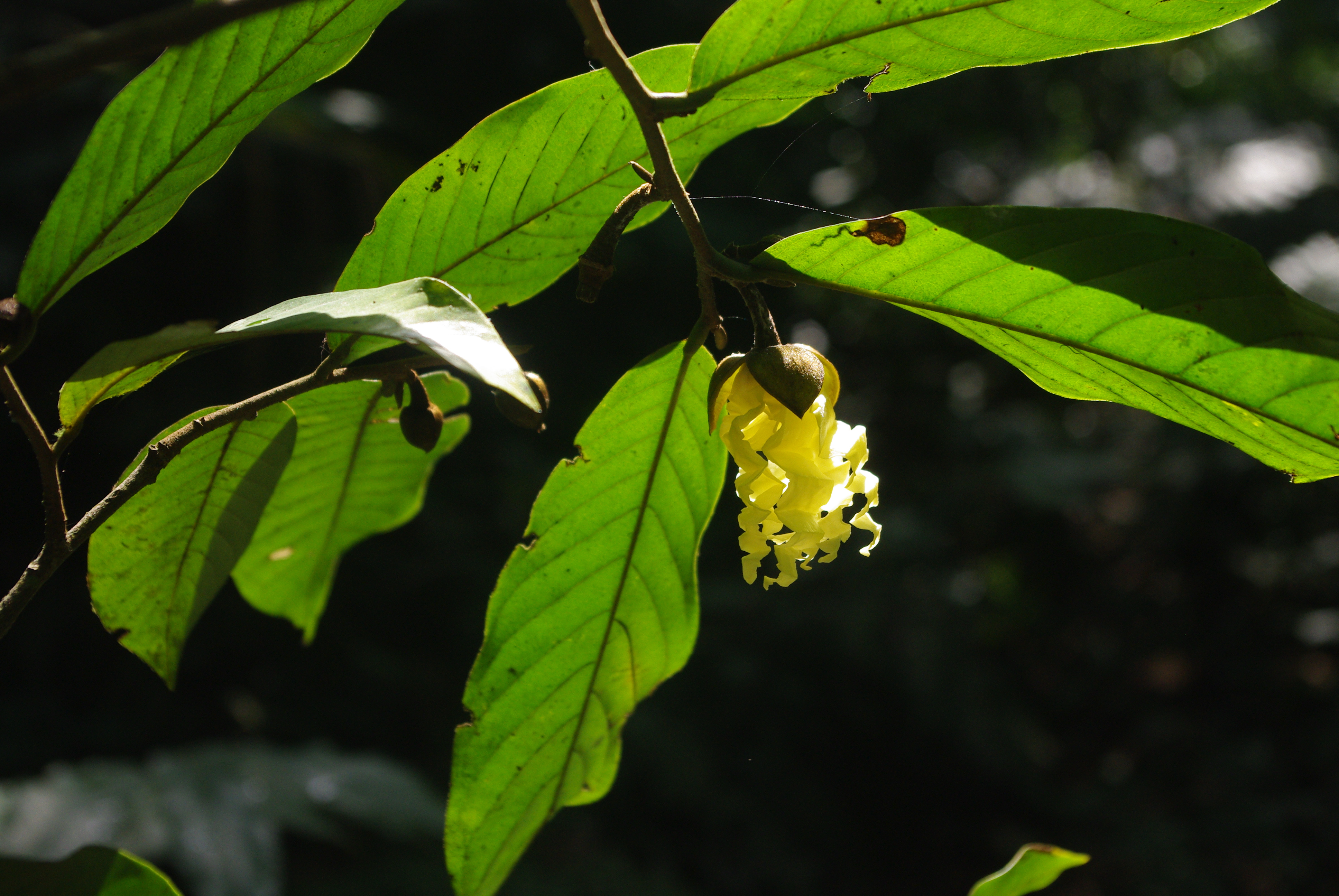Hexalobus crispiflorus
(Hexalobus crispiflorus)

Description
Small to medium-sized tree up to 30 m tall; bole branchless for up to 15(–27) m, often sinuous, up to 100(–140) cm in diameter, strongly fluted; bark surface longitudinally fissured and becoming scaly with small elongate scales, greyish brown, inner bark soft, fibrous and yellowish turning orange upon exposure, slightly scented; crown rounded, with ascending branches; twigs short-hairy to nearly glabrous. Leaves alternate and distichous, simple and entire; stipules absent; petiole 3–6 mm long; blade elliptical to ovate-lanceolate, 7.5–23 cm × 3–8 cm, obtuse to rounded and slightly asymmetrical at base, acuminate at apex, papery to thin-leathery, usually short-hairy below, pinnately veined with 12–18 pairs of lateral veins. Inflorescence an axillary fascicle of 1–3 flowers. Flowers bisexual, regular, 3-merous; pedicel 0.5–1.5 cm long; sepals free, ovate to elliptical-ovate, 1–2 cm long, reflexed, hairy; petals in 2 whorls, narrowly oblong, 2.5–8.5 cm long, fused at base, crispy at margins, short-hairy, pale yellow; stamens numerous, with short filaments and oblong-linear anthers 3–4 mm long; carpels 7–10, 4–5 mm long, ovaries oblong, hairy, stigmas 2-lobed. Fruit consisting of up to 4 indehiscent, oblong follicles 8–9 cm × 4–5 cm, finely wrinkled and rusty brown hairy, many-seeded. Seeds flattened-ellipsoid, 3–4 cm long. Seedling with epigeal germination; hypocotyl 10–12 cm long, epicotyl 2–3 cm long; cotyledons leafy, broadly elliptical, c. 4 cm × 2 cm; first leaves alternate.
Taxonomic tree:







